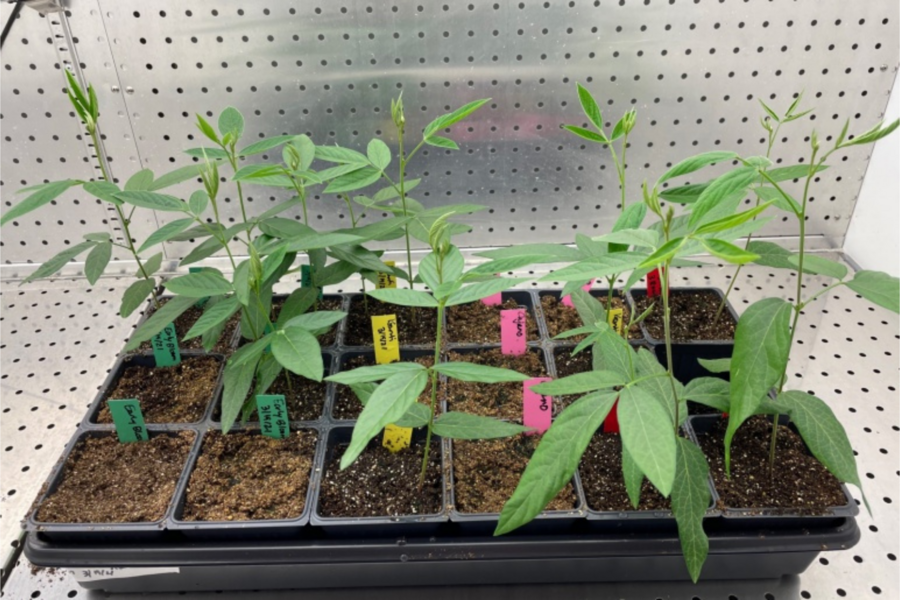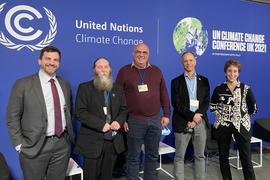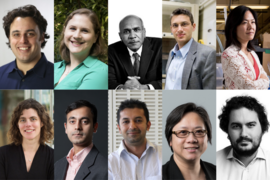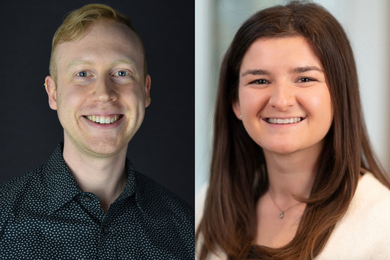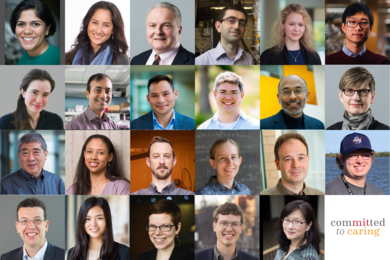Staple crops like rice, maize, and wheat feed over half of the global population, but they are increasingly vulnerable to severe environmental risks. The effects of climate change, including changing temperatures, rainfall variability, shifting patterns of agricultural pests and diseases, and saltwater intrusion from sea-level rise, all contribute to decreased crop yields. As these effects continue to worsen, there will be less food available for a rapidly growing population.
Mary Gehring, associate professor of biology and a member of the Whitehead Institute for Biomedical Research, is growing increasingly concerned about the potentially catastrophic impacts of climate change and resolved to do something about it.
The Gehring Lab’s primary research focus is plant epigenetics, which refers to the heritable information that influences plant cellular function but is not encoded in the DNA sequence itself. This research is adding to our fundamental understanding of plant biology and could have agricultural applications in the future. “I’ve been working with seeds for many years,” says Gehring. “Understanding how seeds work is going to be critical to agriculture and food security,” she explains.
Laying the foundation
Gehring is using her expertise to help crops develop climate resilience through a 2021 seed grant from MIT’s Abdul Latif Jameel Water and Food Systems Lab (J-WAFS). Her research is aimed at discovering how we can accelerate the production of genetic diversity to generate plant populations that are better suited to challenging environmental conditions.
Genetic variation gives rise to phenotypic variations that can help plants adapt to a wider range of climates. Traits such as flood resistance and salt tolerance will become more important as the effects of climate change are realized. However, many important plant species do not appear to have much standing genetic variation, which could become an issue if farmers need to breed their crops quickly to adapt to a changing climate.
In researching a nutritious crop that has little genetic variation, Gehring came across the pigeon pea, a species she had never worked with before. Pigeon peas are a legume eaten in Asia, Africa, and Latin America. They have some of the highest levels of protein in a seed, so eating more pigeon peas could decrease our dependence on meat, which has numerous negative environmental impacts. Pigeon peas also have a positive impact on the environment; as perennial plants, they live for three to five years and sequester carbon for longer periods of time. They can also help with soil restoration. “Legumes are very interesting because they’re nitrogen-fixers, so they create symbioses with microbes in the soil and fix nitrogen, which can renew soils,” says Gehring. Furthermore, pigeon peas are known to be drought-resistant, so they will likely become more attractive as many farmers transition away from water-intensive crops.
Developing a strategy
Using the pigeon pea plant, Gehring began to explore a universal technology that would increase the amount of genetic diversity in plants. One method her research group chose is to enhance transposable element proliferation. Both human and plant genomes are made up of genes that code for proteins, but large fractions of the genome are also made up of transposable elements. In fact, about 45 percent of the human genome is made up of transposable elements, Gehring notes. Transposable elements can make multiple copies of themselves, move around, and alter gene expression. Since humans and plants do not need an infinite number of these copies, there are systems in place to “silence” them from copying.
Gehring is trying to reverse that silencing in plants so that the transposable elements can move freely throughout the genome, which could increase genetic variation by creating mutations or altering the promoter of a gene — that is, what controls a certain gene’s expression. Scientists have traditionally initiated mutagenesis by using a chemical that changes single base pairs in DNA, or by using X-rays, which can cause very large chromosome breaks. Gehring’s research team is attempting to induce transposable element proliferation by treatment with a suite of chemicals that inhibit transposable element silencing. The goal is to impact multiple sites in the genome simultaneously. “This is unexplored territory where you’re changing 50 genes at a time, or 100, rather than just one,” she explains. “It’s a fairly risky project, but sometimes you have to be ambitious and take risks.”
Looking forward
Less than one year after receiving the J-WAFS seed grant, the research project is still in its early stages. Despite various restrictions due to the ongoing pandemic, the Gehring Lab is now generating data on the Arabidopsis plant that will be applied to pigeon pea plants. However, Gehring expects it will take a good amount of time to complete this research phase, considering the pigeon pea plants can take upward of 100 days just to flower. While it might take time, this technology could help crops withstand the effects of climate change, ultimately contributing to J-WAFS’ goal of finding solutions to food system challenges.
“Climate change is not something any of us can ignore. … If one of us has the ability to address it, even in a very small way, that’s important to try to pursue,” Gehring remarks. “It’s part of our responsibility as scientists to take what knowledge we have and try to apply it to these sorts of problems.”

